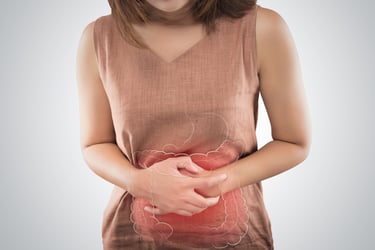eStoreRx™
Online Supplement Dispensary
eStoreRx™ is an easy direct-to-patient ordering & fulfilment program for lifelong wellness.
For over 40 years, Biotics Research Corporation has revolutionized the nutritional supplement industry by utilizing “The Best of Science and Nature”. Combining nature’s principles with scientific ingenuity, our products magnify the nutritional
eStoreRx™ is an easy direct-to-patient ordering & fulfilment program for lifelong wellness.
Biotics Research is proud to expand our commitment to education with the Wellness Unfiltered Pro Podcast. Each episode delves into key health topics and the clinical applications of our premier products. Through candid, insightful conversations, our team offers practical guidance to keep you informed and empowered as a healthcare professional.
December 18 2025
Low-carbohydrate diets are perhaps most popular for weight loss, but the strictest form of carbohydrate restriction – a ketogenic diet – has been show...
 Existing profiles of gut microbiome dysbiosis in adult IBD patients are inconsistent among published studied and have not provided identification of microbial signatures for Crohn’s disease (CD) and Ulcerative colitis (UC). Researchers conducted a longitudinal study to compare the fecal microbiome of CD with patients having UC and with non-IBD subjects. A cohort of 2045 non-IBD and IBD fecal samples from four countries (Spain, Belgium, the UK and Germany was analyzed, applying a 16S rRNA sequencing approach, and analyzed a total dataset of 115 million sequences. Researcher found that in the Spanish cohort, dysbiosis was found significantly greater in patients with CD than with UC, as shown by a more reduced diversity, a less stable microbial community, and eight microbial groups were proposed as a specific microbial signature for CD. Tested against the whole cohort, the signature achieved an overall sensitivity of 80% and a specificity of 94%, 94%, 89% and 91% for the detection of CD versus healthy controls, patients with anorexia, IBS and UC, respectively. Researchers concluded that although UC and CD share many epidemiologic, immunologic, therapeutic and clinical features, the data showed that they are two distinct subtypes of IBD at the microbiome level, and are therefore proposing micro-biomarkers to discriminate between CD and non-CD, independently of geographical regions.
Existing profiles of gut microbiome dysbiosis in adult IBD patients are inconsistent among published studied and have not provided identification of microbial signatures for Crohn’s disease (CD) and Ulcerative colitis (UC). Researchers conducted a longitudinal study to compare the fecal microbiome of CD with patients having UC and with non-IBD subjects. A cohort of 2045 non-IBD and IBD fecal samples from four countries (Spain, Belgium, the UK and Germany was analyzed, applying a 16S rRNA sequencing approach, and analyzed a total dataset of 115 million sequences. Researcher found that in the Spanish cohort, dysbiosis was found significantly greater in patients with CD than with UC, as shown by a more reduced diversity, a less stable microbial community, and eight microbial groups were proposed as a specific microbial signature for CD. Tested against the whole cohort, the signature achieved an overall sensitivity of 80% and a specificity of 94%, 94%, 89% and 91% for the detection of CD versus healthy controls, patients with anorexia, IBS and UC, respectively. Researchers concluded that although UC and CD share many epidemiologic, immunologic, therapeutic and clinical features, the data showed that they are two distinct subtypes of IBD at the microbiome level, and are therefore proposing micro-biomarkers to discriminate between CD and non-CD, independently of geographical regions.
Pascal V, Pozuelo M, Borruel N, et al. A microbial signature for Crohn’s disease. Gut Online First Published Feb 7, 2017: doi: 101136/gutjnl-2016-313235
Submit this form and you'll receive our latest news and updates.
*These statements have not been evaluated by the Food and Drug Administration. This product has not intended to diagnose, treat, cure, or prevent any disease.
Proposition 65 Warning
© 2025 Biotics Research Corporation - All Rights Reserved
Submit your comment